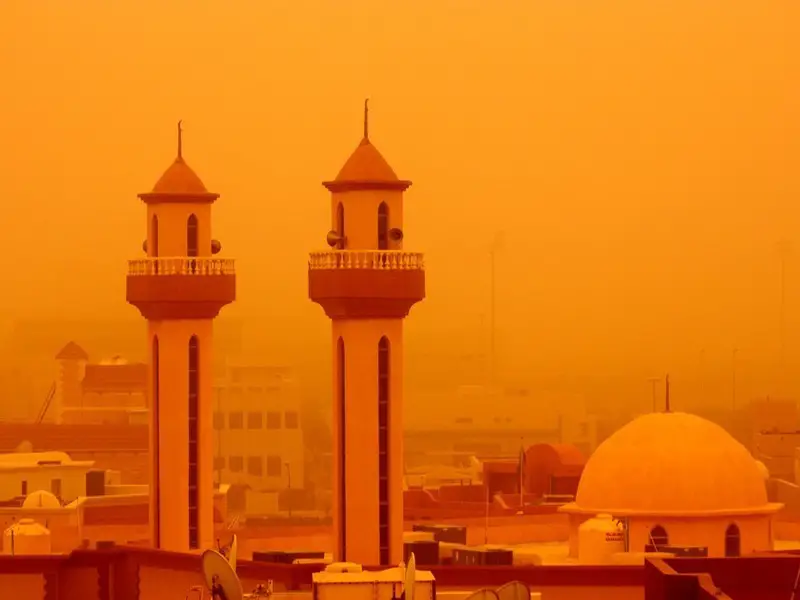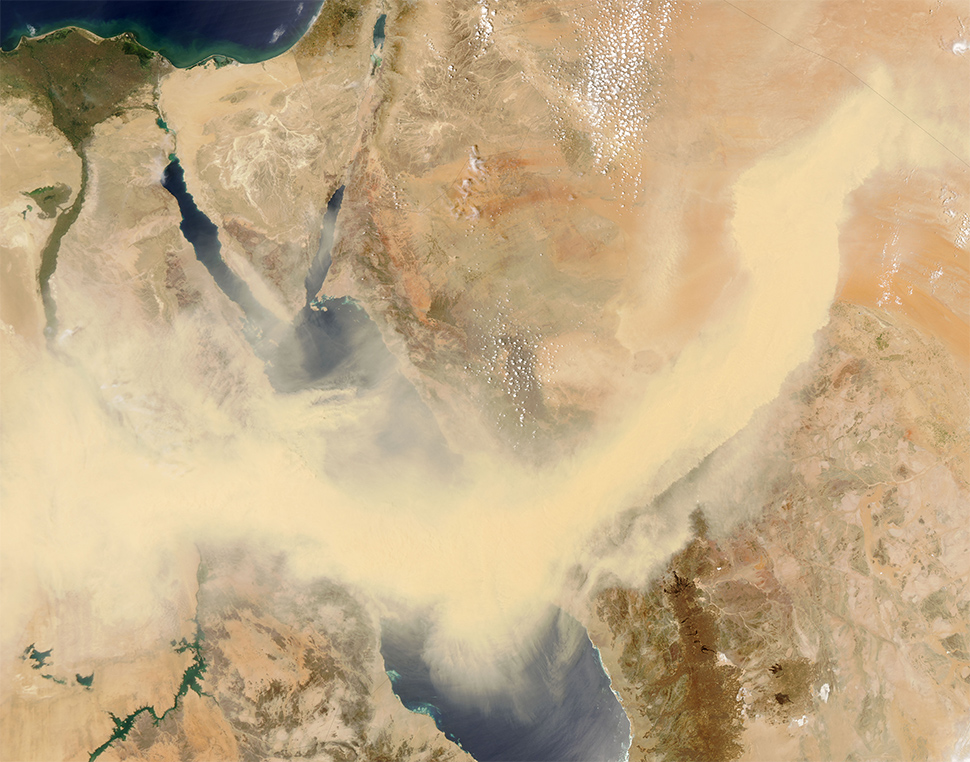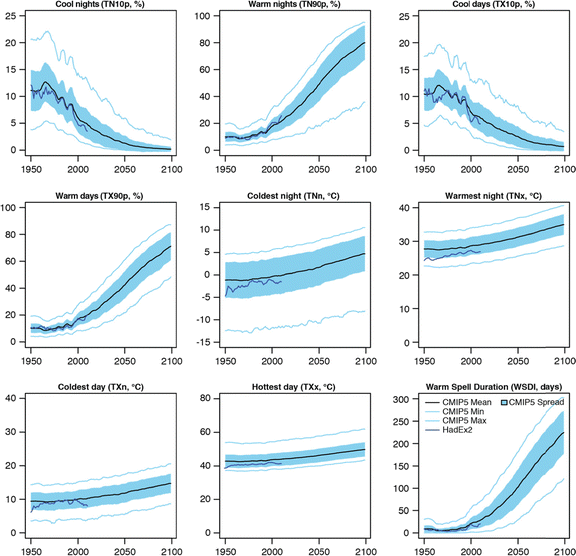
4th May 2016 Climate exodus predicted in North Africa and the Middle East Experts have calculated that in future decades, North Africa and the Middle East may become so hot that human habitability is compromised.
The number of climate refugees could increase dramatically in the future. Researchers at the Max Planck Institute for Chemistry and the Cyprus Institute in Nicosia have calculated that the Middle East and North Africa could become so hot that human habitability is compromised. The goal of limiting global warming to less than two degrees Celsius, agreed at the recent UN climate summit in Paris, will not be sufficient to prevent this scenario. Temperatures during summer in the already very hot Middle East and North Africa will increase at more than twice the rate compared to the worldwide average for global warming. This means that on hot days, regions south of the Mediterranean will exceed 46°C (114°F) by mid-century. Such extremely hot days will occur five times more often than was the case at the turn of the millennium. In combination with increasing air pollution by windblown desert dust, environmental conditions may become intolerable and force people to migrate. More than 500 million people live in North Africa and the Middle East, a region where climate change is already evident. The number of extremely hot days has doubled since 1970. "In future, the climate in large parts of the Middle East and North Africa could change in such a manner that the very existence of its inhabitants is in jeopardy," says Jos Lelieveld, Director at the Max Planck Institute for Chemistry and Professor at the Cyprus Institute. Lelieveld and his team investigated how temperatures will develop in the Middle East and North Africa over the course of the 21st century. The result of their study is deeply alarming. Even if Earth's temperature were to increase on average by only two degrees Celsius compared to pre-industrial times, the temperature in summer in these regions will increase more than twofold. By mid-century, during the warmest periods, temperatures will not fall below 30 degrees at night, and during daytime they could rise to 46 degrees Celsius (approximately 114 degrees Fahrenheit). By the end of the century, midday temperatures on hot days could even climb to 50 degrees Celsius (approximately 122 degrees Fahrenheit). Another finding: heat waves will occur ten times more often than they do now.
In addition, the duration of heat waves will be dramatically prolonged. Between 1986 and 2005, it was very hot for an average period of about 16 days; by the middle of the century it will be unusually hot for 80 days per year. By the end of the century, up to 118 days could be unusually hot, even if greenhouse gas emissions decline again after 2040. "Climate change will significantly worsen the living conditions in the Middle East and in North Africa," says atmospheric researcher Jos Lelieveld, who is convinced that climate change will have a major impact on the health of people in these regions. "Prolonged heat waves and desert dust storms can render some regions uninhabitable, which will surely contribute to the pressure to migrate." The research team has also published findings on the increase of fine particulate air pollution in the Middle East. It was found that desert dust in the atmosphere over Iraq, Saudi Arabia, and in Syria has increased by up to 70% since the beginning of this century. This is mainly attributable to an increase of sand storms as a result of prolonged droughts. It is expected that climate change will contribute to further increases, which will worsen environmental conditions in the region.
In their study, Lelieveld and his team first compared data from 1986 to 2005 with predictions from 26 climate models over the same time period. It was shown that the measurement data and model predictions matched extremely well, which is why the scientists used these models to project future climate conditions for the period from 2046 to 2065 and the period from 2081 to 2100. The researchers based their calculations on two future scenarios: • The first scenario, called RCP4.5, assumes that global emissions of greenhouse gases will start decreasing by 2040 and that the Earth will be subjected to warming by 4.5 Watts per square metre by 2100. This corresponds to the target set at the recent UN summit, which means that global warming should be limited to less than two degrees Celsius. • The second scenario, RCP8.5, is based on the assumption that man-made greenhouse gas emissions will continue to grow unabated. It is therefore called the "business-as-usual" scenario. According to this scenario, the mean surface temperature of the Earth will increase by more than four degrees Celsius compared to pre-industrial times. In both scenarios, the strongest temperature increase in the Middle East and North Africa is expected during the summer – when it is already very hot – and not during winter, which is more common in other parts of the globe. This is primarily caused by desert warming amplification in regions such as the Sahara. Deserts do not buffer heat well, which means that the hot and dry surface cannot cool by the evaporation of ground water. Since the surface energy balance is controlled by heat radiation, the greenhouse effect of gases such as CO2 and water vapour will increase disproportionately. Regardless of which scenario becomes a reality, Lelieveld and his team agree that climate change will cause a significant deterioration in living conditions for the people of North Africa and the Middle East; and that consequently, sooner or later, many people will have to leave the region. From a geopolitical point of view, the resulting influx of refugees into southern Europe and elsewhere could be highly disruptive.
Model results according to the RCP8.5 scenario, and from HadEX2 observations (dark blue lines). ---
Comments »
|










